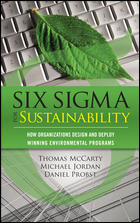DUBLIN — Research and Markets announced the "3D Printing Materials 2016-2026: Status, Opportunities, Market Forecasts" report.
Gone are the days of 3D printing being synonymous with "rapid prototyping; the days of additive manufacturing are here," the report says.
This report covers the current status and future opportunities of materials for 3D printing. It contains many illustrative and analytical figures and tables plus profiles of 29 companies, from across the globe, who supply a wide variety of materials for 3D printing. Upon request the original PowerPoint can be included free of charge as part of the report purchase.
In 2009, Stratasys' key patent expired, the market place became flooded with cheap thermoplastic extruders, interest exploded, and the market for thermoplastic filament rocketed. XYZPrinting have become a market leader by selling very large numbers of cheap printers. They operate on a vendor lock-in model, so their revenue from materials will be large and the price will hold steady. The market for thermoplastic filament is expected to reach over $6.6 billion by 2026.
This new interest inspired developments in many technologies to 3D print a wider variety of materials. A brief overview of each of these technologies is outlined in this report. This report outlines the advantages and disadvantages of printing in different materials, the applications of each, and technical data on the properties of 3D printed materials, which often differ from their traditionally manufactured analogue. These new materials mean there has been space for many new companies, and also many acquisitions by 3D printer manufacturers. Information on start-ups, closures, mergers and acquisitions is included.
No longer is 3D printing used only for one-off pieces and prototypes, but for final part production of items with reduced and simplified assembly, quicker design iterations, greater design freedom, mass customization and minimal material wastage. For these reasons, 3D printing is already common in aerospace, orthopaedic, jewelry and dental sectors. Adoption is fast-growing in education, oil and gas, military, architecture, and medical research sectors.
This massive growth in the use and applications of 3D printers is encouraging a massive growth in the market for 3D printing materials. Detailed forecasts, using information from interviews with 90 key players in the industry and disclosed financial information, estimate key materials are expected to have a total market of over $9 billion by 2026.



